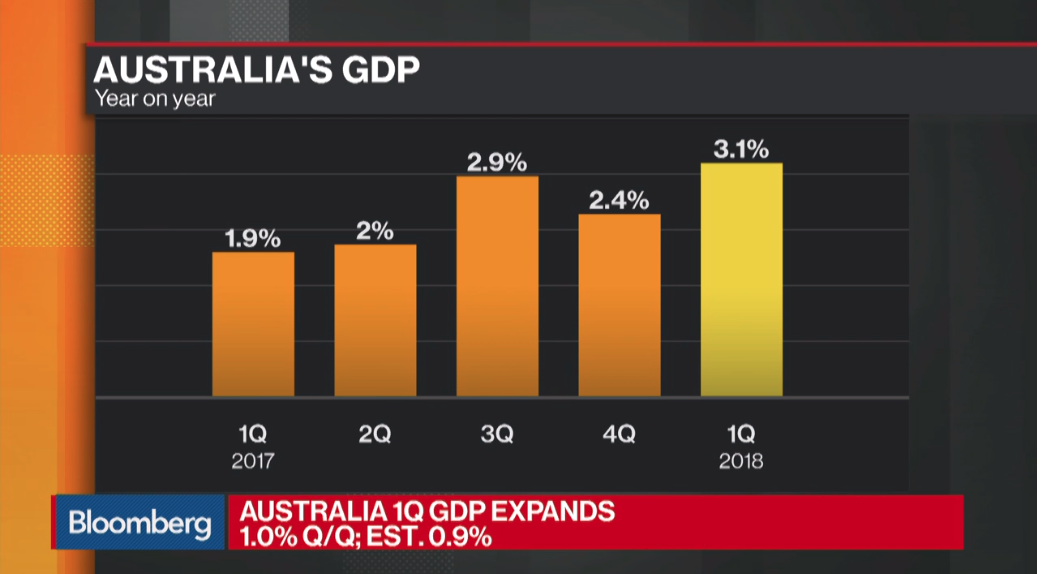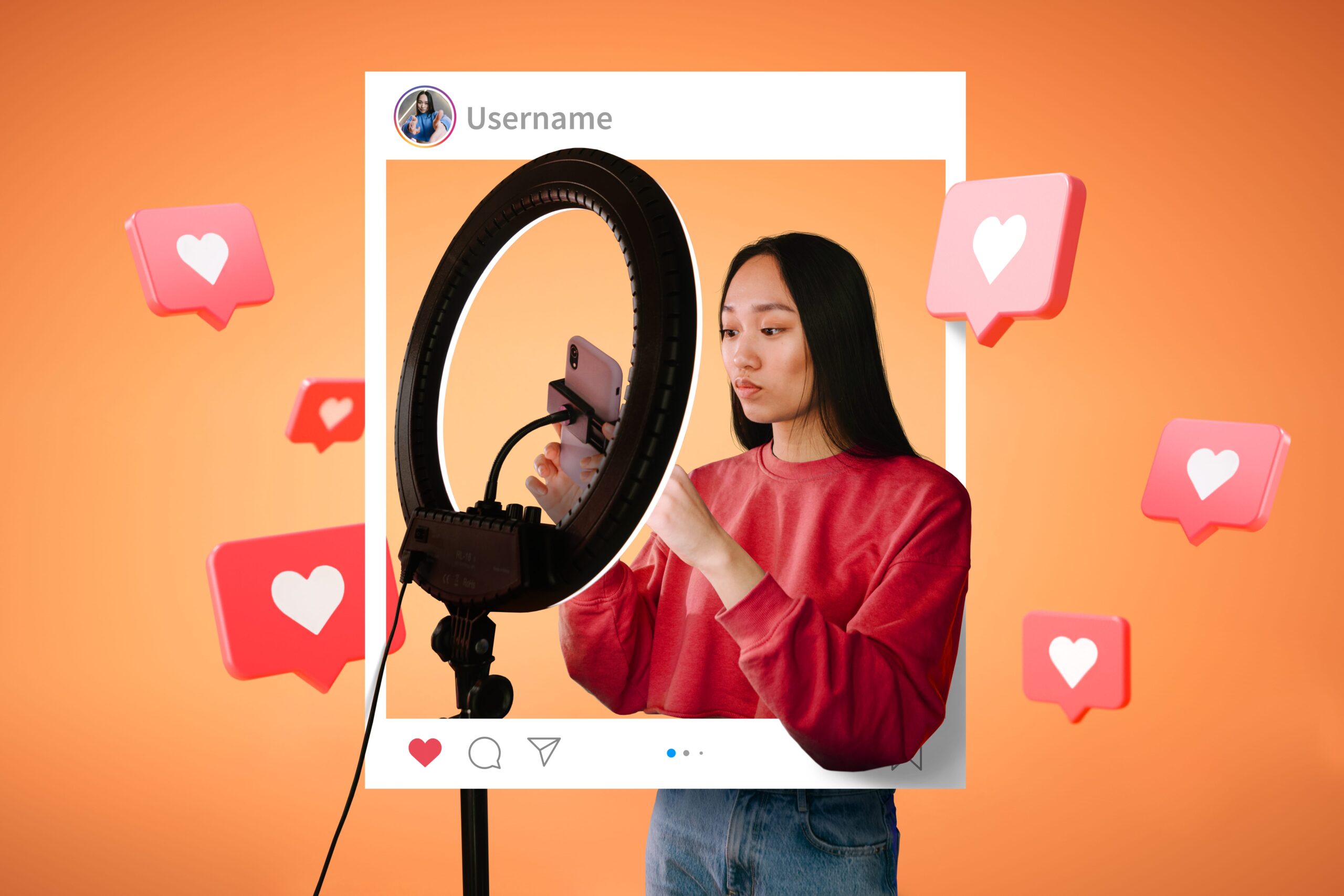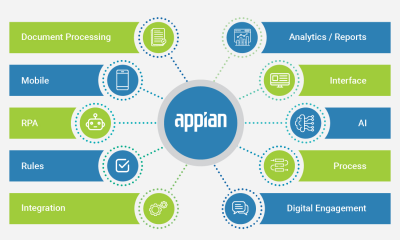Business
Flashtalking Rises as Leader in Creative Tech – Boosting Brand Power

Mediaocean, the mission-critical platform for omnichannel advertising, announces the reintroduction of Flashtalking as the leading independent ad tech stack for creative relevance and activation across all digital marketing channels. With refreshed branding and a new website to reflect its vision for the future of advertising, Flashtalking provides innovative solutions for the world’s biggest brands to unleash the power of creative and make media work better. In the latest G2 Fall 2023 Reports, based on authenticated customer reviews, Flashtalking was named a Leader in both Creative Management Platforms and Cross-Channel Advertising.
“We are incredibly excited to roll out a fresh Flashtalking brand and extend our leadership in the Creative Ad Tech category. This update comes just as the industry’s view could not be clearer: creative personalization is what’s driving outcomes for omnichannel marketers,” said Ben Kartzman, COO of Mediaocean and Flashtalking. “Seeing the results our platform delivers motivates our team to continue innovating and, with AI at the core of our stack, the future is very bright for our company and clients.”
The unveiling also coincides with the Q3 release of a timely research report, “Breaking through the Digital Ad Ceiling with Creative Personalisation.” The findings reflect a growing recognition that Creative Ad Tech built for automation, relevance and intelligence is what drives breakthrough campaigns at scale. In fact, 97% of marketers report that personalized ads drive higher conversions and customer engagement while 79% said they view creative optimization as part of working media budgets.
A cross-vertical survey reveals sentiment that programmatic media has matured, incremental lift is harder to attain, and advertisers are looking for the next thing to drive their business growth. Among key campaign levers, including audience targeting and bid management, creative optimization emerged as the variable which will have the biggest impact for omnichannel marketers. To that point, 96% of respondents said that creative will be more important in advertising campaigns over the next 10 years.
Creative Personalisation Challenges: Insights and Blind Spots
Additional findings from the research shine a light on key challenges and opportunities when it comes to creative personalization:
- Lack of insights and intelligence: 91% of those surveyed are experiencing major blind spots when it comes to creative intelligence.
- Siloed teams: 90% say siloed teams lead to inefficiency and slow go-to-market.
- Disparate technology: 73% think that brand messages have become increasingly disconnected from how consumers experience them in their world.
The survey was conducted using TechValidate to gather insights from 100 leaders at brands, agencies, media providers, and tech companies across ten verticals, including Automotive, Consumer Packaged Goods, Direct-to-Consumer, Entertainment, Financial Services, Pharma/Health, Retail, Technology, Telecommunications, and Travel. Please visit www.flashtalking.com/infographic to see a snapshot of the results.
“This research presents itself at a pivotal moment for our company, partners, and clients. It’s clear that the gap between creative and media grows wider by the day. Consumers are inundated with irrelevant and repetitive messages. Meanwhile, marketers have blind spots about what they’re running and what’s working,” said Grant Parker, Mediaocean and Flashtalking CRO. “To meet the industry need, we have re-upped our mission and commitment to Creative Ad Tech, equipping marketers worldwide with advanced tools for creative personalization and optimisation. Now is the time to integrate creative ad tech into omnichannel media workflow and Flashtalking is leading the way.”
The company will be hosting a webinar to review the research and present a deeper look at the challenges, opportunities, and outlook for Creative Ad Tech and innovation on September 28 at noon EST. “The Mediaocean Current: Flashtalking Creative Intelligence” will provide attendees the opportunity to hear from Mediaocean and Flashtalking leadership on the mission and solutions at hand – including Kartzman, Parker, and CMO Aaron Goldman.
About Mediaocean
Mediaocean is powering the future of the advertising ecosystem with technology solutions that empower brands and agencies to deliver impactful omnichannel marketing experiences. With over $200 billion in annualized media spend managed through its software, Mediaocean uses AI and machine learning to control media investments and optimize business outcomes. The company’s advertising infrastructure and ad tech tools are used by more than 100,000 people to power campaigns from planning, buying, ad serving, and creative personalisation to analysis, optimization, invoices, and payments. Visit www.mediaocean.com for more information.
About Flashtalking
Flashtalking unleashes the power of creative to make media work better. As the leading independent ad tech stack for relevance and activation across all digital marketing channels, our technology bridges the gap between creative and media. We provide automation to connect the silos between teams and deliver more efficient production, versioning, and distribution of creative. We enable personalization to ensure the most relevant and impactful brand message reaches the right consumer at the right moment. And we deploy intelligence for a deep understanding of what messages are resonating with different audiences and environments with granularity and transparency of data. Our solutions operate at scale across CTV, Video, Display, Social, Native, Audio, and Retail Media channels. And we integrate with existing technology stacks to optimize campaigns through DSPs, DAMs, ad servers, verification providers, measurement tools, and more. As part of Mediaocean, Flashtalking is tied into the ad industry’s core system of record for planning, buying, and billing.
Business
Uber Settles Taxi Court Battle for $272 Million

Uber has agreed to pay a whopping $272 million to resolve a protracted legal dispute with taxi drivers and their associations, marking a significant milestone in the ride-sharing and transportation industries. This large payment is a turning point for the ride-sharing sector as a whole, not just for Uber. This article explores the complexities of the lawsuit, the settlement’s effects, and the settlement’s wider implications for the provision of transportation services in the future.
The Origins of the Legal Battle:
The legal battle between Uber and the taxi industry has its origins in the early stages of the ride-sharing movement. Traditional cab operators and drivers expressed concerns about unfair competition and regulatory compliance as Uber and similar services gained traction. Legal challenges against Uber were brought by taxi associations all across the world. They claimed that Uber had violated transportation legislation, engaged in unfair business practices, and had lost revenue as a result of the growth of ride-sharing services.
The Legal Landscape:
Uber and the taxi industry were embroiled in a multi-front legal struggle that was being waged in different jurisdictions worldwide. The classification of Uber drivers, governmental monitoring of ride-sharing platforms, and the effect of technological innovation on established taxi services were at the center of these legal issues. The lengthy duration of the
Uber’s Response:
Uber remained true to its position as a tech platform that links drivers and passengers rather than a transportation provider governed by the same laws as conventional taxi services throughout the court dispute. Uber maintained that its cutting-edge business strategy, which offers more efficiency, affordability, and convenience than conventional taxis, signifies a paradigm shift in the way customers access transportation services.
Uber persisted in growing its global presence in spite of legal issues and regulatory scrutiny, revolutionizing urban mobility and changing the transportation industry. The business’s capacity to bounce back from setbacks and adjust showed how disruptive technology-driven innovation can be in established sectors.
The Settlement:
Uber and taxi drivers and their groups have achieved a historic settlement, with Uber agreeing to pay $272 million to end the case, following years of legal wrangling and courtroom fights. Even while the compensation is large financially, it also serves as a metaphor for Uber and the taxi industry’s reconciliation and compromise.
Key Terms of the Settlement:
The $272 million settlement contains provisions for regulatory compliance and collaboration between Uber and the taxi sector, as well as compensation for associations and taxi drivers impacted by the growth of ride-sharing services. The settlement also creates a framework for continued discussion and cooperation to address common issues and opportunities in the quickly changing transportation sector.
Implications and Future Outlook:
The future of ride-sharing and transportation services is significantly affected by the settlement reached between Uber and the taxi industry. It foreshadows a change towards increased collaboration and integration between conventional cab companies and online platforms, opening the door to a more peaceful and long-lasting ecology.
Furthermore, the settlement underlines how increasingly people are realizing how important it is to have fair and transparent regulations in the ever-changing transportation sector. It is becoming more and more difficult for regulators and policymakers to strike a balance between promoting innovation and defending the interests of all stakeholders as ride-sharing continues to transform cities and consumer behavior.
Finding a middle ground between protecting the interests of all parties involved and encouraging innovation.
To sum up, the $272 million settlement that Uber reached with the taxi industry is a critical turning point in the development of ride-sharing and transportation services. The end of this protracted legal dispute is indicative of a rising understanding that, in the face of technological upheaval, cooperation and compromise are essential. Urban mobility promises to be both inclusive and revolutionary in the future as Uber and other ride-sharing platforms develop alliances with conventional stakeholders and manage the regulatory landscape.
Business
Australia’s GDP Outlook Brightens with Better-Than-Expected Exports

Fears of an economic contraction have been dulled with the latest net export result exceeding expectations.
Ahead of December quarter national accounts on Wednesday, some economists were warning GDP may have gone backwards for the last three months of 2023.
Data released on Monday showed firms running down their inventories over the quarter in a result that was weaker than expected and anticipated to wipe one percentage point off the December GDP.
But Tuesday’s stronger-than-expected net exports outcome should add 0.6 percentage points to growth over the quarter and counter some of the drag from private inventories.
Government spending data, also released on Tuesday, tracked broadly in line with expectations, with public sector inventories to contribute 0.4 percentage points to growth according the ABS.
ANZ senior economist Blair Chapman said the larger-than-expected net exports addition and an increase in public sector inventories would offset weak private inventories.
The bank is expecting a weak 0.3 per cent increase over the quarter, a little higher than the 0.2 per cent market forecast.
Annually, it anticipates a 1.5 per cent lift.
Mr Chapman said such a result would line up with the Reserve Bank’s expectations of where growth should be tracking.
“But, while GDP may come in roughly around the RBA’s expectations, recent monthly consumer price index and labour market data have increased the risk that the RBA could ease sooner than our November expectation,” he said.
Treasurer Jim Chalmers was out warning of a weak growth report on Tuesday, though his remarks came before the final data releases that slot into GDP.
“There is enough around to trouble us about how the economy finished 2023,” he told ABC TV.
Despite the forecasts for the quarter, Dr Chalmers said Australia was in a better position than similar economies, which had gone into recession during the same time period.
“The December quarter in the Australian economy and indeed the global economy was quite weak,” he said.
“Remember, that was the quarter where we saw Japan and the UK both go into recession.
“We had an interest rate hike right in the middle of that December quarter, we had those persistent cost of living pressures that people are confronting in our communities and around our country.”
Business
Importance of Influencer Marketing for Leads

Utilizing influential individuals in the digital world to drive lead generation is a powerful marketing strategy that can yield significant results for businesses. In today’s crowded online marketplace, it’s essential for brands to understand the impact of influencer marketing and how to effectively leverage it to reach their target audience. Whether you’re a small startup or an established corporation, tapping into the power of influential individuals can skyrocket your lead generation efforts and boost brand awareness. In this blog post, we’ll delve into the secrets of influencer marketing and provide actionable insights on how to harness the influence of key individuals to drive leads and grow your business.
Key Takeaways:
- Identify the right influencers: It is crucial to research and identify influencers who align with your brand and have an engaged audience relevant to your target market.
- Build authentic relationships: Developing genuine connections with influencers is key to establishing trust and ensuring the success of influencer marketing campaigns.
- Provide value to the influencer: Offering value, whether it be through monetary compensation, exposure, or exclusive opportunities, is essential in building a mutually beneficial relationship with influencers.
- Create compelling content: Collaborating with influencers to create high-quality and engaging content that resonates with their audience is crucial for successful lead generation.
- Track and measure results: Utilizing analytics and performance metrics to track the success of influencer marketing campaigns is important in refining strategies and maximizing lead generation efforts.
Identifying the Right Influencers
Now that we understand the importance of influencer marketing, it’s crucial to identify the right influencers who can effectively help in lead generation. Identifying the right influencers is a meticulous process that involves understanding their influence, relevance, and various criteria for selection.
Understanding Influence and Relevance
On the quest to identify the right influencers, it’s essential to understand the concepts of influence and relevance. Influence refers to an individual’s ability to affect the opinions, attitudes, and behaviors of others. When it comes to influencer marketing, it’s important to identify individuals who have a strong influence in your target market. Relevance, on the other hand, refers to the alignment between the influencer’s content and your brand or product. The more relevant the influencer’s content is to your target audience, the more effective their influence will be in generating leads.
Criteria for Selecting Influencers
Criteria for selecting influencers include factors such as the size and engagement of their audience, the authenticity and credibility of their content, their alignment with your brand values, and their past collaborations with other brands. The size and engagement of an influencer’s audience are crucial as it determines the reach and impact of their influence. Authenticity and credibility play a significant role in gaining the trust of their followers, essential for lead generation efforts. It is also important to ensure that the influencer’s values align with your brand to maintain brand authenticity.
This careful consideration of the criteria for selecting influencers will ensure that you partner with individuals who can effectively drive lead generation through their influence and relevance. With the right influencers on board, your influencer marketing strategy will have the potential to reach a wider audience, build trust, and generate high-quality leads for your business. This process demands attention to detail and a thorough understanding of your target audience and brand values.
Crafting the Perfect Collaboration
Clearly, one of the most important aspects of influencer marketing is the collaboration between the brand and the influencer. Crafting the perfect collaboration is crucial for a successful influencer marketing campaign. It requires the brand and the influencer to work together seamlessly, aligning their objectives and ensuring that the partnership benefits both parties.
Establishing Clear Campaign Goals
For a successful influencer marketing collaboration, it is essential to establish clear campaign goals from the outset. Whether the goal is to increase brand awareness, drive website traffic, or generate leads, both the brand and the influencer need to be on the same page. Setting clear and measurable objectives will guide the collaboration and ensure that the campaign delivers the desired results. It is important to communicate these goals effectively and create a plan that aligns with the brand’s overall marketing strategy.
Creating Authentic and Engaging Content
With the rise of ad blockers and the decline of traditional advertising effectiveness, creating authentic and engaging content has become the key to capturing the attention of the audience. Influencer marketing offers brands the opportunity to connect with their target audience in a more authentic way. By collaborating with influencers who have a genuine connection with their followers, brands can create content that resonates and drives engagement.
Engaging content that feels natural and fits seamlessly into the influencer’s feed or platform will enhance the brand’s message and increase the likelihood of generating leads. It is essential to focus on storytelling and creating content that adds value to the influencer’s audience while also promoting the brand in a subtle and authentic manner. This approach will result in higher engagement and a more positive reception from the audience.
Optimizing and Scaling Your Influencer Campaigns
Your influencer marketing campaigns have successfully generated leads and increased brand awareness. Now it’s time to optimize and scale your efforts to reach even greater heights of success. Here’s how you can take your influencer campaigns to the next level.
Measuring Campaign Success
Your first step in optimizing and scaling your influencer campaigns is to measure their success. Use tools and analytics to track metrics such as engagement, click-through rates, and conversion rates. This data will help you understand which campaigns are most effective and which influencers are driving the best results for your brand. With this information, you can make informed decisions about where to allocate more resources and which influencers to continue working with.
Strategies for Scaling Up
Scaling up your influencer campaigns involves expanding your reach and impact. This can be achieved through collaborating with a wider network of influencers, investing in sponsored content, and increasing your budget for influencer partnerships. As your campaigns grow, it’s important to maintain the authenticity and credibility of your brand by selecting influencers who align with your values and resonate with your target audience.
Campaigns that successfully scale up will have a broader reach and generate even more leads and conversions for your business. However, it’s essential to carefully manage and monitor the increased activity to ensure that your brand’s image remains consistent and compelling.
Navigating Challenges in Influencer Marketing
Keep, influencer marketing is not without its challenges. As with any marketing strategy, there are hurdles that must be navigated in order to achieve success. Some of the most common challenges in influencer marketing include handling negative feedback and reputation management, legal considerations and compliance, and navigating the ever-changing landscape of social media platforms.
Handling Negative Feedback and Reputation Management
An influencer marketing campaign, no matter how carefully planned, can sometimes attract negative feedback. It’s important for brands to have a plan in place for handling criticism and negative feedback in a way that preserves their reputation and maintains the trust of their audience. Addressing negative comments or reviews in a timely and respectful manner can go a long way in mitigating any potential damage to a brand’s reputation. It’s also important for brands to work closely with influencers to ensure that any negative feedback is addressed appropriately and in a way that aligns with the brand’s values and messaging.
Legal Considerations and Compliance
For influencer marketing campaigns, there are legal considerations and compliance that must be carefully managed. From disclosing sponsored content to adhering to data privacy laws, brands must ensure that their influencer marketing efforts are in line with legal requirements. Failure to do so can result in legal trouble and damage to a brand’s reputation. It’s imperative for brands to work with legal professionals who are well-versed in influencer marketing and can provide guidance on compliance with relevant laws and regulations.
A comprehensive understanding of the legal landscape surrounding influencer marketing is crucial for brands looking to leverage influencer partnerships for lead generation. Ensuring compliance with data privacy laws, FTC guidelines, and other legal considerations is essential for building trust with consumers and safeguarding a brand’s reputation. Working with legal experts in the field of influencer marketing can provide brands with the necessary guidance and support to navigate these complex legal issues successfully.
The Power of Influencer Marketing for Lead Generation
The use of influential individuals in marketing campaigns can be an incredibly effective strategy for generating leads. By leveraging the existing authority and trust of these influencers, businesses can reach a wider audience and drive more conversions. In this digital age, where social media influencers hold significant sway over consumer behavior, incorporating influencer marketing into lead generation efforts is essential for staying competitive in the market. The most successful influencer marketing campaigns involve a careful selection of the right influencers, aligning their values with those of the brand, and creating authentic and engaging content that resonates with their followers. By following these influencer marketing secrets, businesses can maximize their lead generation efforts and achieve greater success in their marketing strategies.
FAQ
Q: What is influencer marketing and how does it work?
A: Influencer marketing is a strategy that involves leveraging influential individuals, or “influencers,” to promote a brand’s products or services to their audience. This is typically done through social media platforms, and influencers are chosen based on their following and relevance to the brand’s target audience. By partnering with influencers, brands can tap into their existing following and credibility to reach potential customers in a more authentic and effective way.
Q: How can influencer marketing help with lead generation?
A: Influencer marketing can help with lead generation by increasing brand visibility among a larger and more targeted audience. When influencers promote a brand’s products or services, their followers are more likely to trust and engage with the brand, leading to an increase in leads and potential customers. Additionally, influencers can create content that showcases the brand and its offerings, which can further drive lead generation through their authentic endorsement and recommendations.
Q: What are some key strategies for successful influencer marketing?
A: Key strategies for successful influencer marketing include identifying the right influencers for your brand, creating authentic and engaging partnerships, and measuring the success of your campaigns. It’s important to align with influencers whose values and audience align with your brand’s target audience. Additionally, creating a clear partnership that highlights the authenticity of the collaboration is essential, as well as measuring the performance of campaigns to optimize future influencer marketing efforts.
Q: How can a brand identify the right influencers for their influencer marketing campaigns?
A: Brands can identify the right influencers for their campaigns by considering factors such as the influencer’s relevance to their industry, the demographics and engagement of their followers, and the influencer’s past brand partnerships. It’s important to collaborate with influencers who resonate with your brand’s values and audience, and who have a genuine connection with their followers.
Q: What are the potential benefits of leveraging influential individuals for lead generation?
A: The potential benefits of leveraging influential individuals for lead generation include increased brand awareness, higher engagement and credibility, access to a larger audience, and the potential for long-term brand loyalty. Influencers can help brands reach new prospective customers and retain existing ones through their authentic and influential endorsements and content creation.
Q: What are some common pitfalls to avoid in influencer marketing for lead generation?
A: Common pitfalls to avoid in influencer marketing for lead generation include partnering with influencers who do not align with your brand, failing to establish clear campaign goals and expectations, and not measuring the success and ROI of influencer campaigns. It is crucial to conduct thorough research and due diligence before collaborating with influencers to ensure that their following and engagement are genuine and relevant to your brand.
Q: How can a brand measure the success of their influencer marketing campaigns for lead generation?
A: Brands can measure the success of their influencer marketing campaigns for lead generation by tracking key metrics such as reach, engagement, lead conversions, and overall ROI. Using tools and analytics provided by social media platforms, as well as implementing unique tracking links and codes, can help brands gain insight into the performance and effectiveness of their influencer marketing efforts.
-
Business2 years ago
How to Earn Money Writing Blog Posts in 2023: A Comprehensive Guide
-
Games2 years ago
How does Dead Space Remake enhance the Horror Classic of 2008
-
Video2 years ago
Everything you need to know about Starfield
-
Health2 years ago
How is Yoga and Pilates Bridging the Gap Between your Mind and Body
-
Health2 years ago
Migraine medications significantly improve the quality of life
-
World2 years ago
Swiss Pharma Powerhouse Acino Expands into Latin America with M8 Pharmaceuticals Acquisition
-
Self Improvement2 years ago
Enhancing Relationships and Emotional Intelligence Through Mindfulness Meditation
-
Business2 years ago
How to Use LinkedIn to Build Your Professional Brand


































